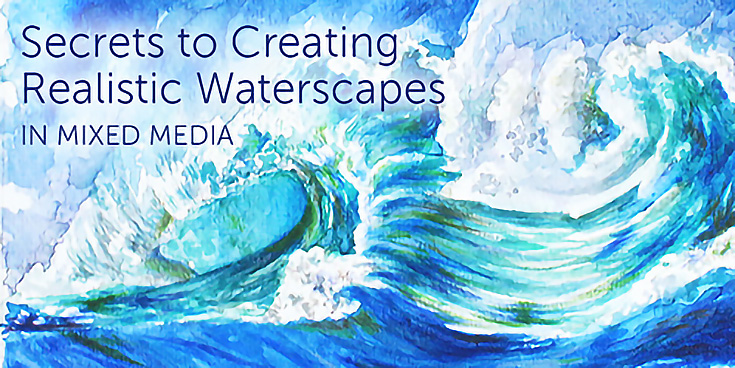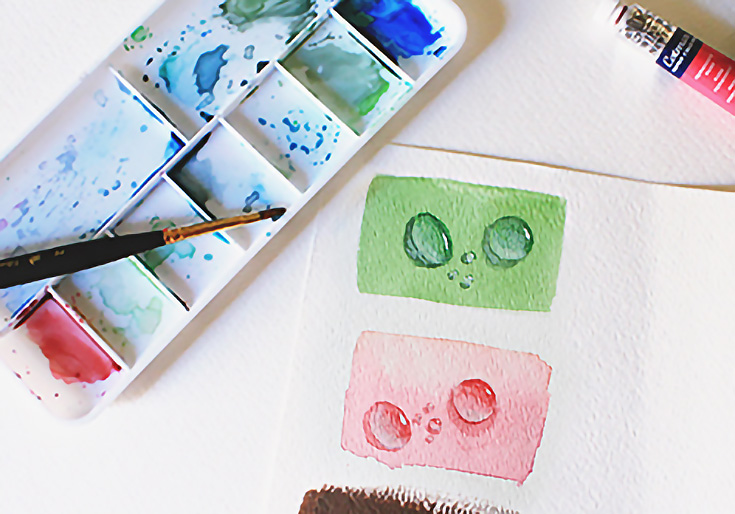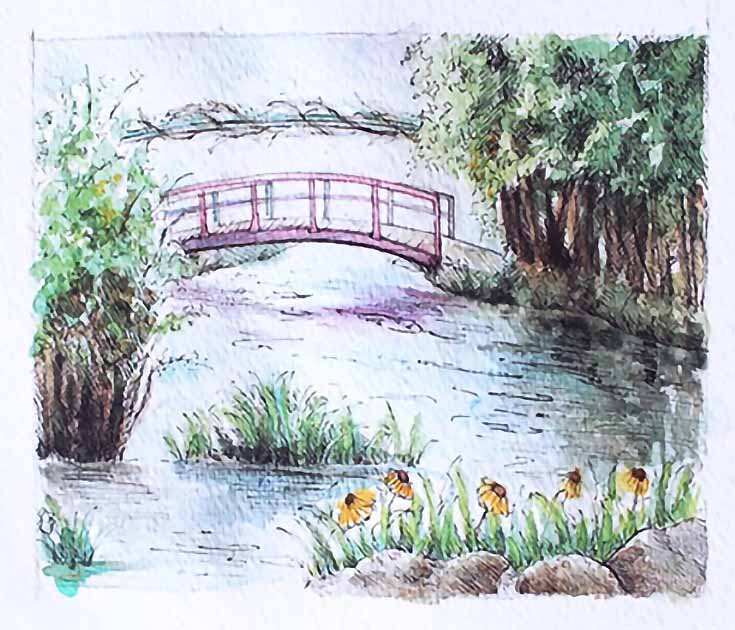Happy Saturday, everyone!
Craftsy’s latest eGuide—Secrets to Creating Realistic Waterscapes—is now available for download. Click the link above to get your copy for free, or read on below to learn more about what’s inside.
With all the different forms water can take, it’s no wonder artists have trouble painting it. Water can be as vast as the ocean, as small as the tiny droplets found on a rosebud in the early morning, or any size in between. It’s incredibly translucent and reflective, so the world around it is always echoed in its depths. And of course, it’s nearly always in motion, too—rushing between riverbanks, rolling in over the wet sand, or rippling just slightly as the wind blows across its mostly-still surface.
In short, water is versatile. . . and to accurately capture its essence, we need to be versatile too.
That’s where designer and illustrator Antonella Avogadro comes in. Together with Craftsy, Antonella has created a guide to drawing 4 types of water scenes—waves crashing at the beach; still, quiet ponds; cascading waterfalls; and smallest of all, the perfectly reflective water drop.
Antonella starts out by going over all of the different types of media she uses to create her waterscape illustrations. Besides watercolors (the obvious choice) she uses gouache, acrylics, some specialty acrylic paint, and two types of colored pencils. She also explains a little bit about why these mediums are so helpful in painting realistic water, and shares how consistent practice is so more important than buying the priciest, most expensive materials.
The guide then splits into 4 sections, one for each step-by-step tutorial. In each section, some of the steps are the same—Antonella always starts with a sketch of her composition, and then transfers or outlines her sketch in pen before adding the water media over the top.
She also frequently makes use of masking fluid (at least whenever the water is in motion) to create the look of foam, spray, or whitecaps once she’s finished adding color to the piece.
Antonella’s instructions aren’t so detailed that they don’t allow for individual creativity, and in fact, she encourages readers to explore and create on their own as much as possible. But if you’re looking for several new tricks to try in your attempts to create more realistic water, this is a great guide to pick up—you’ll read through it in less than 20 minutes, and probably use it as a reference many times down the road!
Editor’s Note: special thanks to Craftsy for sponsoring this post with a free download. Click the following link to get Secrets to Creating Realistic Waterscapes for free!
This post may contain affiliate links.



